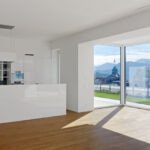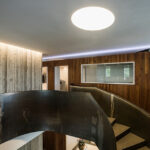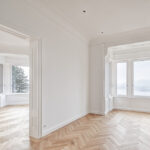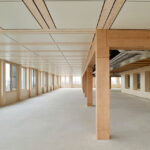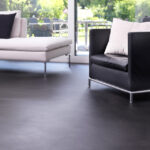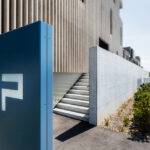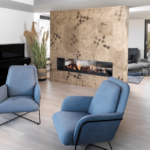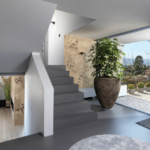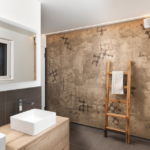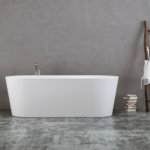- Home
- Competencies
Facade construction
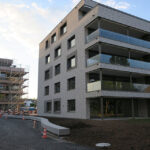
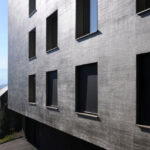
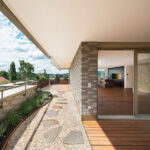
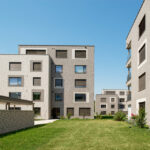
- Service
- About Us
- Contact
Headquarters in Emmen
-
MVM AG
Kirchfeldstrasse 44
6032 Emmen - 041 289 04 04
- mail@mvm-ag.ch
-
Monday - Friday
08:00–12:00 / 13:30–17:00
Zug location
-
MVM AG ZG
Commercial Street 11
6330 Cham - 041 758 18 57
- mail@mvm-ag-zug.ch
-
Monday - Friday
08:00–12:00 / 13:30–17:00
Sursee location
-
MVM AG Sursee
Surentalstrasse 10
6210 Sursee - 041 920 35 15
- mail@mvm-ag.ch
-
Monday - Friday
08:00–12:00 / 13:30–17:00
Stans location
-
MVM AG Stans
Hansmatt 30
6370 Stans - 041 610 00 42
- mail@mvm-ag.ch
-
Monday - Friday
08:00–12:00 / 13:30–17:00
-
MVM AG
- Rental
- Shop
Innovative facade design: A fusion of aesthetics and functionality
- Competently. Innovative. Qualitatively.
- from MVM AG
- 6 December 2023
The facade of a building is the first thing we notice when we approach it. It shapes the character and appearance of a building and plays an important role in architecture. In recent years, however, facade design has developed significantly and innovative approaches are on the rise. Nowadays, the design of facades is not just about aesthetics, but also about functionality and sustainability. In this blog post we will look at some exciting examples of innovative facade design and look at the advantages of these new approaches.
Intelligent materials for innovative facade design
Traditional facades were often made of static materials such as concrete, glass or metal. Today, however, intelligent materials that can adapt to the environment are increasingly being used. Smart materials are revolutionizing the world of facade design by offering new possibilities for durability, functionality and aesthetics. These materials are designed to adapt to changing conditions and achieve higher performance.
A notable example of intelligent materials for innovative facade design are self-healing facades. By using special coatings or polymers, cracks and damage can be automatically detected and repaired. These materials react to external influences such as temperature fluctuations or physical stress and independently initiate repair mechanisms. This not only reduces maintenance and the associated costs, but also significantly increases the service life of the facade.
Another example is adaptive facades, which can adapt their properties depending on the environment. They react to sunlight, temperature or humidity and adjust their transmittance or reflection. This optimizes a building's energy consumption because the facade actively contributes to regulating the interior climate. In summer, an adaptive façade can reject the sun's rays, preventing rooms from overheating, while in winter it allows more sunlight to pass through to maximize passive solar energy gains. These intelligent materials for innovative facade design enable more efficient use of resources and contribute to energy savings.
Energy efficiency and sustainability
Energy efficiency and sustainability are central aspects in modern facade design. Through innovative approaches, building facades can help reduce energy consumption, use renewable energy and thus make a positive contribution to environmental protection.
An important focus here for innovative facade design is on improving thermal insulation. A well-insulated façade reduces heat loss in winter and heat gain in summer, significantly reducing a building's heating and cooling needs. Insulating materials such as thermal insulation composite systems (ETICS) or high-quality insulation materials are used in combination with effective air sealing to achieve optimal energy efficiency.
Another approach to increasing energy efficiency is the use of sun protection measures. Through the targeted use of blinds, window films or solar protection glass, solar heat radiation can be reduced, thereby reducing air conditioning costs. At the same time, the carefully designed sun protection still allows sufficient daylight to reduce the need for artificial lighting and thus further reduce energy consumption.
In addition to energy efficiency, the sustainability of the materials used also plays an important role in innovative facade design. The use of recyclable or reusable materials reduces resource consumption and minimizes environmental impact. Sustainable facade design also takes into account the life cycle of materials by choosing long-lasting products that require low maintenance and can be easily recycled at the end of their useful life.
Vertical gardens as innovative facade design
Vertical gardens and green facades are an exciting and popular trend for innovative facade design. Not only do they offer aesthetic benefits, but they also contribute to a variety of positive effects, both for the building itself and for the environment.
The use of vertical gardens allows plants to be placed on the outside wall of the building, creating a lively and natural atmosphere. The plants can include a variety of species, from climbing vines and flowers to herbs or even vegetables. By choosing plants that are adapted to local climate conditions, vertical gardens can contribute to species-rich biodiversity while supporting local flora and fauna.
A major advantage of vertical gardens is their positive impact on the indoor climate and the energy efficiency of the building. The plants serve as a natural insulation layer and improve the thermal insulation of the facade. In summer they provide shade and help cool the building, while in winter they serve as additional thermal insulation. This can reduce energy costs for heating and cooling.
Green facades as innovative facade design
Green facades as innovative facade design also contribute to improving air quality. The plants filter pollutants from the air and produce oxygen, which leads to a healthier indoor climate and a more pleasant environment for the residents. They can also help reduce noise levels by absorbing sound, creating a quieter environment.
In addition, vertical gardens and green facades have positive effects on the urban microclimate. In heavily built-up urban areas, greening of facades can help reduce heat island effects by lowering the ambient temperature. They contribute to stormwater retention by storing and gradually releasing stormwater, thereby reducing overloading of wastewater systems. This effect is particularly important in times of climate change as it contributes to adaptation to more frequent heavy rainfall events.
In addition to the ecological advantages, vertical gardens as innovative facade designs also offer an aesthetic enhancement of buildings and urban spaces. They create a harmonious connection between the built environment and nature and create a pleasant and inviting atmosphere. Green facades can also serve as an identity feature and help increase the recognition and uniqueness of a building.
Innovative facade design that suits your needs
Facade design has developed significantly in recent years and today offers a wealth of innovative approaches. From smart materials to energy-efficient solutions to interactive and green facades, there are numerous ways to combine aesthetics and functionality. These innovative facade designs not only help to beautify the architecture, but also have a positive impact on energy efficiency, sustainability and the well-being of residents. The future of facade design promises even more exciting developments as architects and designers continue to explore new ways to design buildings and push the boundaries of creativity.
If you would also like an innovative facade design for your building, contact us now and let us advise you!




